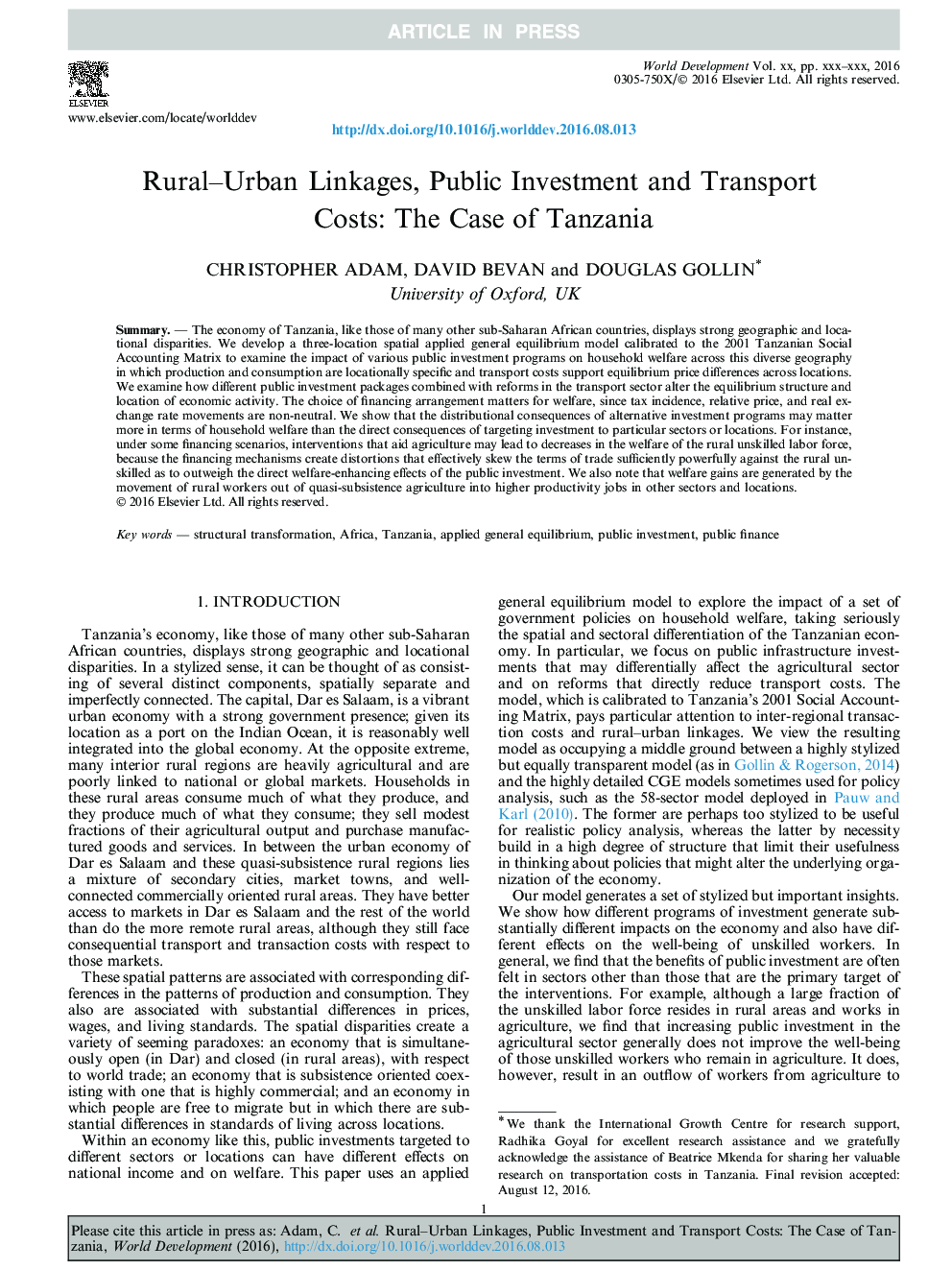| Article ID | Journal | Published Year | Pages | File Type |
|---|---|---|---|---|
| 7391481 | World Development | 2018 | 15 Pages |
Abstract
The economy of Tanzania, like those of many other sub-Saharan African countries, displays strong geographic and locational disparities. We develop a three-location spatial applied general equilibrium model calibrated to the 2001 Tanzanian Social Accounting Matrix to examine the impact of various public investment programs on household welfare across this diverse geography in which production and consumption are locationally specific and transport costs support equilibrium price differences across locations. We examine how different public investment packages combined with reforms in the transport sector alter the equilibrium structure and location of economic activity. The choice of financing arrangement matters for welfare, since tax incidence, relative price, and real exchange rate movements are non-neutral. We show that the distributional consequences of alternative investment programs may matter more in terms of household welfare than the direct consequences of targeting investment to particular sectors or locations. For instance, under some financing scenarios, interventions that aid agriculture may lead to decreases in the welfare of the rural unskilled labor force, because the financing mechanisms create distortions that effectively skew the terms of trade sufficiently powerfully against the rural unskilled as to outweigh the direct welfare-enhancing effects of the public investment. We also note that welfare gains are generated by the movement of rural workers out of quasi-subsistence agriculture into higher productivity jobs in other sectors and locations.
Keywords
Related Topics
Social Sciences and Humanities
Economics, Econometrics and Finance
Economics and Econometrics
Authors
Christopher Adam, David Bevan, Douglas Gollin,
